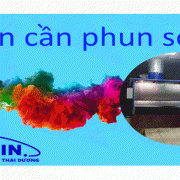Beyond Stereotypes: Complex Portrayals of Gay Individuals in Movies
A Diverse Landscape: Exploring the Genres of Gay Movies
Gay motion pictures embody a large range of genres, catering to diverse tastes and interests. From heartwarming romantic comedies that celebrate love and relationships, such as “Love, Simon” and “The Way He Looks,” to poignant dramas that explore the complexities of id and societal challenges, like “Moonlight” and “Call Me by Your Name,” there is a gay movie for everyone. For these looking for thrilling and suspenseful narratives, LGBTQ+ thrillers like “Knife + Heart” and “Spiral” offer gripping tales with unique perspectives. Additionally, documentaries play an important function in shedding mild on LGBTQ+ history, activism, and the ongoing battle for equality.
The Importance of Representation
Gay motion pictures play a significant role in selling understanding, acceptance, and empathy in the course of the LGBTQ+ community. By showcasing the lives, experiences, and struggles of homosexual people, these films problem stereotypes and foster a extra inclusive society. Moreover, gay motion pictures present a way of belonging and validation for LGBTQ+ viewers, who may often really feel marginalized or underrepresented in mainstream media.
Beyond Entertainment: The Social Impact of Gay Movies
Gay films have had a profound impression on society, contributing to significant advancements in LGBTQ+ rights and social acceptance. Groundbreaking movies like “Brokeback Mountain” and “Milk” sparked conversations about same-sex relationships and marriage equality, paving the greatest way for higher understanding and legal recognition. Additionally, the rising visibility of LGBTQ+ characters in mainstream cinema has helped to normalize diverse sexual orientations and gender identities, promoting a more inclusive and equitable world.
From Niche to Mainstream: The Evolution of Gay Movies
In the early years of cinema, portrayals of gay characters have been typically stereotypical, adverse, or relegated to the background. However, over time, independent filmmakers and LGBTQ+ activists started to create their own narratives, difficult these restricted representations and giving voice to authentic LGBTQ+ experiences. The rise of film festivals devoted to LGBTQ+ cinema, such as the Sundance Film Festival and Outfest, provided platforms for these movies to achieve wider audiences and achieve important acclaim.
In current years, there has been a notable shift in the direction of greater inclusion of LGBTQ+ characters and storylines in mainstream Hollywood productions. Movies like “The Kids Are All Right” and “Carol” have achieved each commercial success and important recognition, demonstrating the growing demand for diverse and genuine representation on display screen. This progress is a testomony to the efforts of LGBTQ+ filmmakers, actors, and advocates who’ve tirelessly championed for higher visibility and equality within the movie industry.
Challenges and Opportunities
Despite the progress made, challenges stay in making certain equitable representation for all members of the LGBTQ+ community. Intersectionality plays a vital role, as individuals with intersecting identities, corresponding to LGBTQ+ people of colour or transgender people, proceed to face distinctive limitations and underrepresentation. It is important for the movie industry to actively search out and amplify these numerous voices to create a really inclusive cinematic landscape.
Finding Your Next Favorite Film: Resources for Gay Movies
With the abundance of streaming platforms, movie festivals, and on-line sources obtainable, discovering homosexual films has never been simpler. Streaming companies like Netflix, Hulu, and Amazon Prime supply a broad array of LGBTQ+ films, ranging from classics to new releases. Additionally, web sites and online communities devoted to homosexual cinema, similar to
https://freegayporn.name/ present evaluations, suggestions, and curated lists to help you find movies that align with your pursuits.
Gay movies have come a long way, evolving from marginalized representations to changing into an integral part of the cinematic panorama. These films not only entertain but also educate, encourage, and empower, fostering larger understanding and acceptance of the LGBTQ+ community. As the film industry continues to embrace variety and inclusion, we are ready to expect to see much more compelling and authentic LGBTQ+ stories on screen in the years to come back.
FAQs
1. What are a few of the most iconic homosexual movies of all time?
Some iconic homosexual movies embrace “Brokeback Mountain,” “Moonlight,” “Call Me by Your Name,” “Carol,” “The Kids Are All Right,” “Milk,” “Paris Is Burning,” and “The Adventures of Priscilla, Queen of the Desert.”
2. Where can I find gay movies online?
Many streaming platforms provide a number of gay motion pictures, including Netflix, Hulu, Amazon Prime, and HBO Max. Additionally, web sites like IMDb and Rotten Tomatoes provide comprehensive lists and critiques of LGBTQ+ films.
3. Are there any film festivals devoted to homosexual movies?
Yes, there are numerous film festivals worldwide that focus on LGBTQ+ cinema, such as Outfest, Frameline, BFI Flare, and the New York Lesbian, Gay, Bisexual, Transgender Film Festival.
4. How can I help LGBTQ+ filmmakers?
You can help LGBTQ+ filmmakers by watching their movies, attending movie festivals, donating to organizations that assist LGBTQ+ cinema, and amplifying their work on social media.
5. What is the way ahead for homosexual movies?
The way ahead for homosexual movies is promising, with increasing representation and numerous storytelling. We can expect to see more LGBTQ+ narratives that discover intersectionality, problem stereotypes, and rejoice the richness of the human expertise.




















